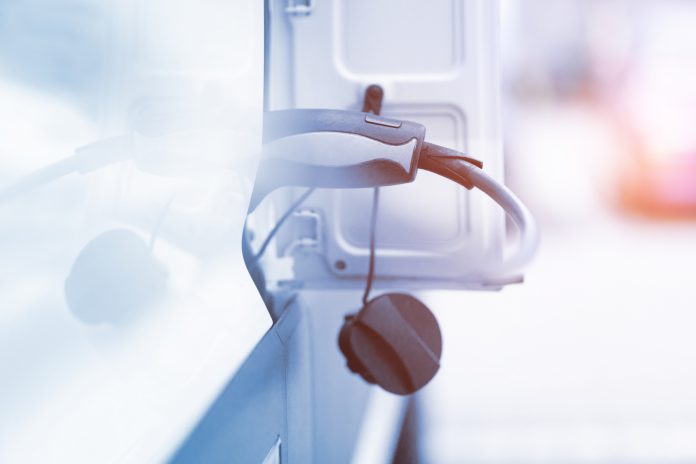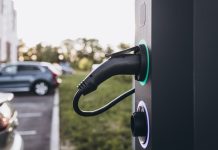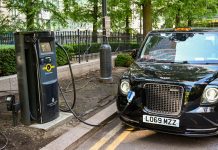Fleet electrification is no longer optional; it’s a necessity, according to Simon King, Senior Partner at edenseven
Fleet Electrification is no longer a ‘nice-to-do’ thing; it is imperative, but why is that? In 2022, government figures showed that domestic transport was, by far, the sector emitting the most significant proportion of greenhouse gas (GHG), contributing 28% of UK GHG emissions. This figure came primarily from road transport, with the vast majority emitted from cars and vans. (1)
This has led to the creation of a series of commitments designed to accelerate the shift from petrol- and diesel-powered internal combustion engine (ICE) vehicles. This includes the greening government commitments (GGCs), calling for 100% of the government’s car and van fleet to be entirely zero emissions at the tailpipe by 31st December 2027 (2); the zero emission vehicle (ZEV) mandate, requiring vehicle manufacturers to sell a larger proportion of battery electric vehicles (BEV) each year, with a benchmark goal of 80% of new cars and 70% of new vans sold in Great Britain by 2030; and the ban on the sale of new ICE cars and vans scheduled for 2035. (3)
These deadlines are increasingly near, particularly since the Labour Party have committed to bringing the ban on the sale of new ICE vehicles forward to 2030 if they win the next general election, which, with one now scheduled for summer, has the potential to be much sooner. (4)
To achieve the most ambitious of these dates, namely, that of the GGCs, every car and van replaced over the next three and a half years will need to have zero emissions at the tailpipe, which, given current technology and infrastructure availability, means transitioning to BEV.
We know that action must be taken, and it needs to be taken now; so, what are the main challenges and solutions?
Fleet electrification: What are the facts?
The three critical considerations for any successful electric fleet transition are (in order of priority and with the percentage of recommended total effort shown): infrastructure (60%), driver awareness (30%), and vehicles (10%).
This is a fundamentally different order to historic fleet thinking, in which vehicles have been the main focus. The reason for this change is that, in an ICE world, the infrastructure is pre-existing, provided in the form of forecourts by the oil majors and supermarkets. In an electric world, depending on public charging, infrastructure has a significant adverse impact, including both cost and operational time factors.
In April 2024, the average cost per kWh for rapid public charging was £0.80 (5), which is over ten times the cost of the best EV home charging tariffs (6). Therefore, the cost advantage of charging vehicles at their existing dwelling locations is enormous: For example, a vehicle averaging 15,000 miles per year at 3.6 miles/kWh would save £3,000 per year charging at home on an EV tariff as opposed to utilising public rapid charging.
Thus, the focus should be on charging vehicles where they ‘sleep’ (i.e. where they have existing downtime), especially as the average car in the UK is only driven 4% of the time, otherwise being parked at home 73% of the time and elsewhere the remaining 23%. (7)
Fleet infrastructure
A data-led integrated software approach is needed to ensure that the optimal infrastructure solutions are implemented. edenseven is a data-driven sustainability consultancy with extensive experience implementing infrastructure solutions across a wide range of organisations, ensuring effective, rapid, expert electric fleet transitions. Simon King, Senior Partner for edenseven, has led the rollout of the largest BEV fleet in the UK, which now has 5,000 BEVs out of a total fleet of 7,000 vans and cars.
From this wealth of hands-on experience, edenseven has curated an approach to fleet transition which utilises a combination of telematics, mileage data, commercials, vehicle fleet data, driver surveys, and stakeholder interviews, analysed and assessed to holistically establish exact use cases to deliver real-world solutions. These include cohesive infrastructure solutions, as well as effective reimbursement solutions, and robust management information and reporting, which are all critical in ensuring that drivers are fully informed. In short, success is dependent on integrated software and hardware solutions based on extensive back-office capabilities across all routes to charge.
Driver awareness
Cost reduction is increasingly possible within fleet electrification. With benefit-in-kind rates at 2%, both employee and employer costs are minimised, fuel costs are significantly lower, acquisition costs are reduced, and service, maintenance, and repair (SMR) costs are a fraction of the ICE costs. This is all due to minimal moving parts in the drive train.
Driver awareness at all levels of an organisation also requires significant time investment. Negative, inaccurate media coverage often influences the perception of electric vehicles among fleet drivers and senior managers alike. As such, many senior management teams are not aware of the financial benefits that fleet electrification can deliver alongside the obvious emissions reductions.
One way to resolve this would be to target senior support through the provision of a compelling business case based on organisation-specific data, which integrates infrastructure, awareness, and vehicles. edenseven would subsequently take this further by combining the business case with a front-line engagement and training programme, designed to cultivate support from the driving community.
This best-of-both-worlds approach, utilising both top-down and bottom-up engagement, would achieve a clear understanding of the benefits as well as endorsement throughout the organisation in question, both of which are crucial for a successful and welcomed deployment.
Fleet electrification: Vehicles
Vehicles are, surprisingly, the easiest part of the puzzle.
Each month, more and more innovative solutions are launched, providing answers to almost all use cases.
In January 2019, only 1% of car sales were BEV, with only seven models available; however, in April 2024, 17% of sales were BEV, with 251 models listed on ev-database.org. Therefore, the priority is to understand the actual use cases and duty cycles of the existing fleet, which edenseven can coordinate as part of the essential data analysis phase to establish the required charging infrastructure.
This ensures that the optimal replacement vehicles are identified, with the few use cases where existing solutions do not currently exist, such as large vans and lorries, scheduled for later transition.
Fleet electrification: How edenseven can help
It is, of course, possible for each organisation to develop solutions from first principles, but this takes significant time, and there are very few people with the practical experience of deploying large-scale successful BEV fleets and the associated charging infrastructure. It is, therefore, more cost-effective, given the savings which can be accessed, and time-efficient, a critical consideration given the imminence of various deadlines, to bring in expertise such as edenseven.
References
1. 2020 UK Greenhouse Gas Emissions, Final Figures (publishing.service.gov.uk)
2. Greening government commitments 2021 to 2025 – GOV.UK (www.gov.uk)
3. Pathway for zero emission vehicle transition by 2035 becomes law – GOV.UK (www.gov.uk)
5. https://www.zap-map.com/ev-stats/charging-price-index
6. https://octopus.energy/smart/intelligent-octopus-go/
7. General facts and figures about roads and road use (racfoundation.org)

This work is licensed under Creative Commons Attribution-NonCommercial-NoDerivatives 4.0 International.











